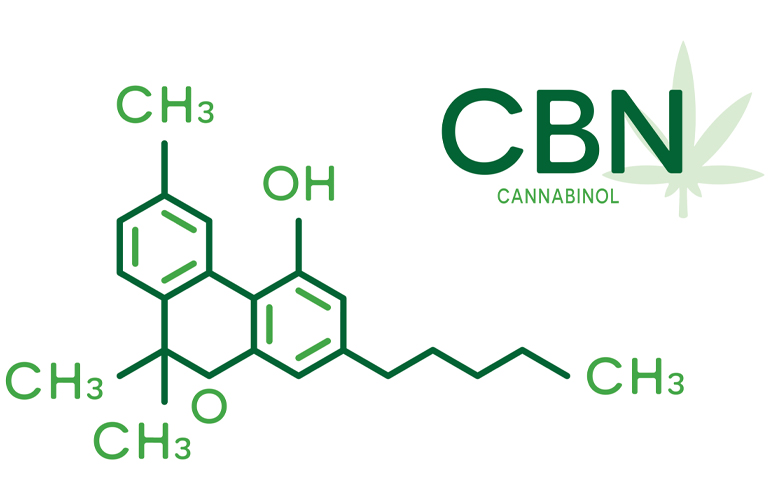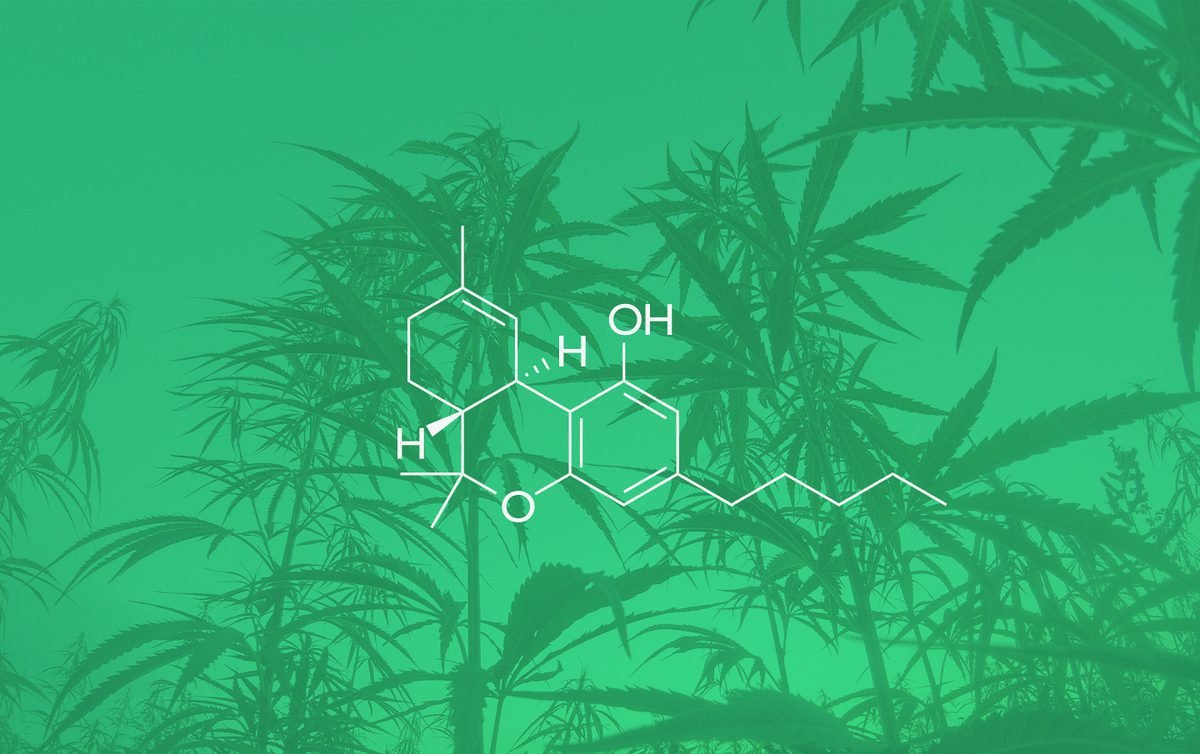What are the potential benefits of CBN (cannabinol)?
CBN is a non-intoxicating compound that is best known as the cannabinoid created when THC ages. For that reason, it’s usually present in high amounts in older cannabis. While this might be a turn-off for some, others seek out older cannabis just to enjoy the effects of CBN.
Here are a few of the potential benefits of CBN currently being explored in research. Keep in mind, current research on CBN is limited with very few studies demonstrating its effects in the human body.
Antibacterial
Studies on CBN have found that it may be a potent antibacterial agent. In lab settings, CBN was tested on strains of MRSA bacteria that are resistant to traditional antibiotics. Researchers found it to be a potent antibacterial agent against these resistant strains. Perhaps in the future, we will see CBN being used to fight off bacterial infections that our usual antibiotics can’t heal.
Anti-inflammatory
CBN may also be a potent anti-inflammatory agent capable of helping those with rheumatoid arthritis. In one rodent study, CBN was shown to reduce arthritis. While more research needs to be done, this could end up being an incredible help to those suffering from this debilitating condition.

Glaucoma
CBN may also be helpful for those suffering from glaucoma. One study on rabbits found that CBN (as well as THC) reduces intraocular pressure—the biggest risk factor for glaucoma. Still, research is in early stages and CBN hasn’t been shown to be superior to other glaucoma medications. More research is needed to know if cannabinoids could ever effectively replace any traditional treatments for glaucoma.
Appetite stimulation
In rodent studies, CBN increased the amount of food that rat subjects ate, suggesting that it could be an effective appetite stimulant. Since some avoid THC (another well-known appetite stimulant) due to its intoxicating effects, CBN could potentially offer an alternative for those seeking the munchies without the high—but more research is needed.
Do you have any question on CBN? Want to buy or test a sample of CBN?
If so feel free to write us an email here!
Continuing from the last article, we want to show all other cannabinoids contained in hemp, this time we are going to discuss CBN.
Cannabinol (CBN) is a non-enzymatic oxidation product of tetrahydrocannabinol (THC) and is found in large amounts in dried and aged cannabis. The acid form of CBN is found in large amounts in the cannabis plant, but after heating this acid is decarboxylated becoming CBN.
While until recent years only seven cannabinol-like derivatives were included, in 2005 the list of CBN molecules was updated to include 11 different phytocannabinoids, all of which have the CBN aromatic ring. The concentration of CBN in cannabis products depends on age and storage conditions. It is a relatively minor constituent in fresh cannabis because it is a product of THC oxidation.
It is a weak partial agonist of CB1 and CB2, with approximately 10% of THC activity. It has potential for therapeutic application in diseases where cannabinoid receptors are upregulated. Unlike other cannabinoids, CBN is not derived from cannabigerol (CBG), perhaps necessitating a different biosynthetic pathway for its formation.
When CBN was first discovered, it was thought to be an inactive component of cannabis, but it was later found to have many therapeutic properties, mainly due to its activity on cannabinoid receptors (CB). It has a lower affinity for CB1 (Ki 211.2 nM ) and CB2 (Ki 126.4 nM), and was found to be inactive when tested alone, but produced greater sedation when combined with THC.
CBN Brief History and Overview
Although CBN may be new to you, It was the first cannabis compound to be isolated from cannabis extract in the late 1800s. Then by the 1930s, the first to have its structure determined and in 1940, to have scientists achieve its chemical synthesis. In fact, prior to the discovery of THC, CBN was considered the cause of marijuana’s psychoactive effects.
Since it was not included in 1961 by the United Nations Single Convention on Narcotic Drugs, from the legal point of view it represents a delicate issue. In some countries it is illegal because it is derived from THC, in others it is legal because it can also be extracted from hemp, a product allowed in many countries. There are many contradictions about it, as in the case of everything related to cannabis and its cannabinoids.
It is difficult to isolate large concentrations of CBN, as they are only present in aged hemp plants or decomposed plant material. While associated with THC, CBN possesses a similar chemical structure to CBD.
What is the difference between CBD and CBN?
Most cannabinoids interact with receptors in our endocannabinoid system (ECS). These substances can therefore produce a wide range of effects on our bodies. Both CBD and CBN possess a similar genetic structure. But CBD influences our endocannabinoid system by binding to certain receptors, while CBN follows a more direct pathway.
CBD and CBG are two completely different cannabinoids contained within cannabis plants, they have very different chemical structures and concentrations.
In addition to having a strong affinity for CB2 receptors, CBN also partially binds to CB1 receptors, just like the most famous cannabinoid found in the marijuana plant: THC. These two components have several things in common, and for good reason: without THC, CBN could not exist.
CBN is not born from the union of acids and enzymes. It is produced when the cannabis plant is already in full development. Cannabinoids are volatile substances and constantly change when exposed to environmental factors. There are two ways to obtain CBN. The first is to turn THCA (raw THC) into CBNA, letting it decompose with time. If heat is subsequently applied, the extra carbon molecule (the “A”) is removed. Alternatively, you can let the already activated THCA (THC) decompose. In both cases, you will get the cannabinoid CBN as a result.

Research on potential uses of CBN
Because of the way CBN is synthesized, research into its effects is very limited. Almost all testing is in the pre-clinical stage, or conducted on animal guinea pigs. Initial results appear positive, but more extensive studies need to be done to determine the actual potential of the cannabinoid.
ALS
In 2005, a study in animals with amyotrophic lateral sclerosis (ALS) by the University of Washington examined the possible effects of CBN. Scientists were trying to understand if the cannabinoid was able to affect the course of the disease and survival rate. At the end of the study, they concluded that the 5mg/kg/day treatment “delayed the onset of the disease by more than two weeks, while the survival rate showed no change.”
Appetite
The appetite-stimulating effect generated by THC is well documented, but as a drawback, this cannabinoid generates psychotropic effects. The University of Reading decided to evaluate whether cannabinol could affect appetite, without this undesirable side effect. During the investigation, patients who were given cannabinol showed an “increased appetite.” Experts concluded that cannabinol, in the future, could be a viable alternative to THC.
Inflammation
Research on CBN is slow, but important work has been done in recent years. For example, a study conducted in 2016 suggests to us of CBN’s potential to combat rheumatoid arthritis. Looking at a group of guinea pigs, researchers found that CBN (along with CBD and CBC) caused a significant reduction in collagen-induced arthritis.
It has also been shown to reduce the production of keratinocytes, which are known to cause skin and heart lesions in people with psoriasis.
Glaucoma
A 2007 study conducted by the University of Jerusalem examined the effects of cannabinoids in disease and in normal health. Several studies pointed to a link between glaucoma and hypertension. Fortunately, CBN was one of the substances with the potential to reduce intraocular pressure. Therefore, this cannabinoid represents a possible alternative for glaucoma patients.
Pain Perception
Finally, recent 2019 studies have strongly suggested that CBN may influence pain perception. The latest findings occurred as researchers studied nerve growth factor-induced masticatory muscle sensitization in female rats. In the study, researchers found that a 1mg/ml dose of CBN was able to reduce this sensitization and relieve pain. This was not the only recorded instance of CBN in which the compound demonstrated the ability to fight pain. In fact, back in 2002, pharmacology researchers at Lund University Hospital discovered that CBN and THC activate the same pain pathways in the body.
Do you have any question on CBG? Want to buy or test a sample of CBG?
If so feel free to write us an email here!




